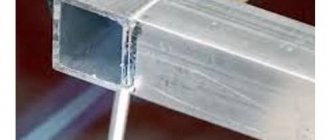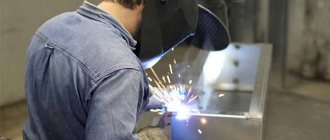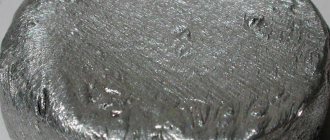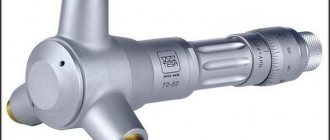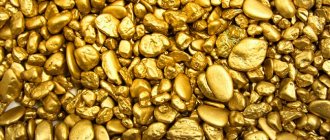Medieval scientists who comprehended alchemy, from its very inception, sought to learn the secret of creating the philosopher's stone, an artifact capable of transforming any metal into real gold. We spent so much time searching, tested so many technologies, but the technology was not discovered. But alchemy was able to advance science with its research, and also give rise to such a modern scientific discipline as chemistry. Instead of its great-grandmother alchemy, chemistry today offers us the chance to follow an equally attractive path of enrichment. Today we will look at the chemical technology that allows the extraction of aluminum from clay.
Characteristics
The purity of materials determines their melting point. Aluminum is suitable for various technological procedures due to its low weight and good ductility. At high temperatures, interaction with oxygen occurs. An oxide film appears on the surface of the metal, which protects it from corrosion and oxidation. Melting aluminum helps to change the structure of the substance, so the protective coating is beneficial for it. Shrinkage and additional internal stress appear during sudden cooling.
Required Components
Here's a list of things:
- graphite powder
- metal barrel
- welding machine
- concrete mixer
- bauxite clay
Today, the above, with the exception of bauxite, can easily be found among hardware markets and building materials stores. So let's move on from idle theorizing to the practice of this technology. True, to start you need to find a place where you will get the required raw materials. Drive a car there that can transport loads weighing half a ton. This is exactly the amount of bauxite to be collected. There is no point in taking less than five centners. When stacking bauxite, consider your strength. Now take what you have collected.
Features of the technological process
A crucible is a refractory container for heating metal. Products made from the following materials are used:
- Porcelain.
- Steel.
- Cast iron.
- Corundum.
At home, a ready-made crucible or container made from a wide iron pipe is used. To make it, you will need a grinder and welding equipment. The volume of the crucible is selected individually, the container is heated evenly, and the crushed metal melts as a result of heat transfer.
Before heat treatment, it is necessary to reduce the melting temperature so that the state of the metal changes faster. To do this, aluminum is crushed into small fragments. Ignition or oxidation occurs frequently after such grinding. The state of the resulting aluminum oxide changes at higher temperatures. This substance is removed along with other slags after remelting the base metal.
During the heat treatment process, you will have to avoid liquid getting into the crucible. The sudden evaporation of water causes an explosion. When immersing metal in a container, you must make sure that there is no moisture on it. Aluminum wire is most often melted. First, the material is divided into fragments with scissors, then compressed with pliers. This method prevents the exposure of oxygen to the metal. If there is no need to obtain high-quality parts, there is no need to grind raw materials.
You will have to model the casting technology yourself if you need to obtain molten aluminum at home. The material is pre-cleaned from dirt, impurities, and slags. Large workpieces are divided into several small fragments. The casting method requires following the instructions: the most convenient method is used to melt the metal. Slag is removed from the surface of the fluid. Liquid aluminum is poured into a mold, which breaks when it solidifies.
Technology
The key to achieving a comfortable and prosperous life was literally under your feet all this time. Today we will talk about the so-called bauxite clay. This is a very common raw material. It contains a significant percentage of aluminum, which, for complete happiness, can only be obtained from bauxite using the technology described here. This material can be found in many places. For example, it hides under a layer of soil in various pits, along the banks of rivers, lakes and generally near bodies of water.
To tell the truth, you won’t be satisfied with raw materials alone, of course. More space will be required. The ideal option, of course, would be the area of the factory premises in order to immediately gain the ability to produce a large-scale turnover of the extracted goods, but in the beginning an ordinary garage will do. We will achieve the results we need using electric current.
What heat source should I use?
For remelting aluminum at home, the following are used:
- A muffle furnace that you can make yourself. This is an effective method for quickly melting aluminum.
- A blowtorch can melt aluminum in small quantities.
- Sometimes a gas cutter is used.
The hearth is built from bricks, the frame is made from a metal container. A hole is drilled on the side to supply oxygen. A vacuum cleaner, hair dryer or other device that pumps air is connected to the metal tube. After lighting the fire, the crucible is placed in the hearth.
To achieve better heat treatment, coals are also laid out on the sides. To avoid heat loss, you can build a lid and leave holes for smoke to escape. If the metal needs to be melted once, there is no need to equip a furnace. A simple gas stove will help heat aluminum to the desired temperature. Small pieces of metal melt in about half an hour.
Typically a tin can is used as a crucible. To achieve uniform temperature distribution, a container with aluminum is placed in another jar so that the gap between the walls is 1 cm. To ensure access to the flame, you need to make several holes in a large jar, 3-4 cm in diameter. It is not necessary to remove the divider on the burner. This way you can achieve uniform heating of the metal can. Cover the large tin with a lid to prevent heat from escaping.
conclusions
Based on the analyzed industrial technology, the following follows regarding the possibility of producing aluminum from clay at home:
:
- ’s quite possible to repeat the installation at home or in a garage
, but the thing is quite expensive and bulky - to repeat the Bayer process followed by electrolysis, but it is very expensive and requires power input. Costs may exceed profits received
- The main limitation here
is the amount of electricity and the amount and content of aluminum in the clay.
As for other methods that sometimes seem magical and are even sold on the Internet as a ready-made business, they should be tested in practice before drawing conclusions.
For example, a technique using a crucible and clay mixed with coal may also work.
After all, in essence, the classical technology described above is repeated there, but without cryolite. You shouldn’t believe every business idea without studying it thoroughly! After all, producing aluminum is a large and complex process that requires special knowledge and good preparation in every sense.
It is inappropriate to talk about simple technology on your knees here. And when they tell you about a barrel on a fire and a shovel, everything is clearly a little exaggerated. However, with the right approach, success is guaranteed.
How to make a casting mold
Creating a simple solder material does not require making a special mold. You can pour metal onto a steel sheet.
The following materials are used to create the form:
- Gypsum.
- Sand.
- Clay.
- Coal ash.
- Liquid glass.
The alloy is poured into the mold in different ways:
- Open.
- Closed.
The open method is simple. The molten metal is poured into a regular container, tin can, cup, etc. When the substance solidifies, the blank is removed from the container. If the shape of the metal object is not important, you can leave the aluminum on a durable surface.
Complex casting requires the product to comply with the specified parameters; for this, molding elements are used. Silica is a common substance that is often used in open pour applications. The product consists of two containers into which earth is poured and compacted. The silica elements are compressed and a casting pattern is placed between them. This way you can get an accurate print of the required part. The model is removed and hot aluminum is placed into the mold. For the closed casting method, river sand mixed with liquid glass is used.
Plaster can be used for one-time casting. Models are made from paraffin or foam plastic. The use of such materials requires working in an open space with good air access. The foam is not removed from solid plaster, it is filled with hot aluminum. The combustion products of this substance are harmful to health.
Getting aluminum in the garage?
Getting aluminum in the garage?
Post by barsergey » Tue Jan 18, 2011 8:21 pm
Re: Getting aluminum in the garage?
Post by avor » Tue Jan 18, 2011 9:44 pm
Re: Getting aluminum in the garage?
Post by barsergey » Tue Jan 18, 2011 9:51 pm
Re: Getting aluminum in the garage?
Post by barsergey » Wed Jan 19, 2011 5:33 pm
Re: Getting aluminum in the garage?
Post by nikkochem » Wed Feb 02, 2011 9:49 am
Re: Getting aluminum in the garage?
Post by Carbon » Wed Jun 10, 2015 5:58 pm
Good afternoon, dear forum members. I came across the same ad online, getting aluminum in the garage. I scoured the Internet, there are a lot of similar ads, each ad has thousands of views. But. There is not a single mention, they say I bought the technology, but it doesn’t work. Unfortunately, the author of the advertisements does not respond to letters.
I would like to return to this topic, there is new data on the process, I found it on the Internet:
The aluminum manufacturing process is as follows
1.. The clay brought from the quarry must be ground for better mixing with the component. In production, ball mills are used for this. For small production, I use a regular concrete mixer, into which, after pouring out the clay, 5-7 round stones or metal cores with a diameter of 100 mm are placed. After 3 - 5 minutes the clay will be ground into powder. The kernels are removed and the component is filled in. The component is powdered graphite, which improves the current conductivity of the composition. In some cases, when the clay moisture content is less than 70%, the clay must be hydrated by adding water.
Security measures
The use of personal protective equipment is required when melting aluminum. Hands, face, open areas of the body must be protected. It is recommended to use welding gloves that can withstand temperatures greater than 600 degrees. This is the main means of protection, since the chances of liquid aluminum getting on your hands are the highest. Goggles and a mask prevent hot elements from getting into your eyes. To be completely protected, you can carry out smelting work in a metallurgist suit with high fire resistance. A chemical respirator is used when cleaning aluminum with welding flux.
Melting aluminum at home is not difficult. The metal is heated in a previously prepared container. Slag is removed from the surface of the liquid substance, then pure aluminum is poured into the mold. Furnace design and temperature determine the melting time. When using a gas torch, the heat must be applied to the metal from above.
What is
Aluminum is a metal, an element of D.I. Mendeleev’s periodic table No. 13. A simple substance with a formula of one symbol is Al. International designation – Al (Aluminium).
The lattice structure is a cube centered on its faces.
The color is initially white, but when exposed to air a silver-matte oxide film is created.
According to the classification of non-ferrous metals, it is included in the light group (together with titanium and magnesium).
Aluminum is the most common metal in the earth's crust and the third most common chemical element, after oxygen and silicon.
Where is it used?
The characteristics of aluminum have led to its use in all sectors of the economy - from rocket science to the production of food foil.
Based on the degree of metal purity, there are two types: technical and high purity.
Industry
The metal is used as a structural material and a reducing agent.
For example, pipes made from it are durable and reliable. In addition to main gas and water pipelines, heating radiators, these are elements of gas tanks, cars, airplanes, and ships. They are used by decorators and road pavers.
Metallurgy
The metal is used as a basis for alloys. Unlike natural impurities, alloys are created by people. Their artificial origin eliminates the natural shortcomings of the material. For example, copper and magnesium increase the strength threshold.
There are hundreds of aluminum alloys, the most famous are:
Other alloying elements are iron, nickel.
It is used as a powerful deoxidizer in the production of steel. Thanks to it, porosity of castings and ingots is eliminated.
They use it to recover rare metals from their compounds.
Electrical engineering
This is the optimal material for the range of products:
- Wires, cables, thermal equipment.
- Refrigeration and other cryogenic systems.
- Valves of internal combustion engines, oil platforms, turbines.
Aluminum replaces the costly galvanizing process.
Energy
Metal acts as a universal secondary energy carrier for generating heat, producing hydrogen, and electricity for electrochemical generators.
Used in heat exchangers, cooling radiators.
Construction
A gas-forming agent, thanks to which it is possible to obtain a porous building material.
Technologists are working on creating foamed aluminum - a new generation of ultra-light, ultra-strong material.
Military-industrial complex, aviation and astronautics
The first airplane was made of aluminum (1919). Today it is the number one raw material in aircraft and rocket production. It is found in the bodies of airplanes, rockets, and satellites.
Aluminum and its compounds are the basis or component of rocket fuel.
Cheap light metal was adapted for the production of machine guns, grenade launchers, pistols, and explosives.
Other industries
The metal is popular in “peaceful” segments.
Food industry
In the food industry, this is food packaging, foil for culinary purposes (for example, baking in the oven).
Aluminum is a food additive E173.
Cutlery for public catering, the army (kettles, flasks), and penitentiary institutions is also aluminum.
Medicine
Aluminum gel is the basis of drugs for problems of the gastrointestinal tract. The most famous are Maalox, Almagel.
Jewelry
Jewelers loved aluminum: it is easy to process, and the film on the surface gives it the appearance of a noble patina.
But those times are gone. Today metal is held in high esteem only by the Japanese. Craftsmen make traditional decorations for hairstyles and clothing. They are used as jewelry, replacing elite silver.
Fashion is whimsical: today luxury jewelry made of concrete as frames has appeared. So a surge in the popularity of jewelry aluminum is not excluded.
Pressing speed
The profile leaves the matrix at temperatures above 500 ºС. The speed of movement of the profile at the exit from the dies can be from 8 to 80 m per minute, depending on the alloy and complexity of the profile (Figure 6). A puller is usually involved in the longitudinal transfer of the profile along the receiving table, which can reach a length of 50 m. It grabs the front end of the profile with special clamps and pulls the profile along the roller conveyor of the receiving table. The speed of movement of the puller and the axial force it applies to the profile are consistent with the speed at which the profile exits the matrix.
Figure 6 – Profile output from the matrix; cooling of profiles on the output table [1]
Profile cooling table and stretching machine
On the cooling table, the profiles continue their cooling to the workshop temperature and then enter the stretching machine (Figure 8). On a stretching machine, the profile is stretched by a given amount of plastic deformation. The purpose of this operation is to reduce deviations of the profile shape from straightness and torsion, as well as, if necessary, a given cold deformation.
Figure 8 – Profiles on the cooling table and in the stretching machine [1]


